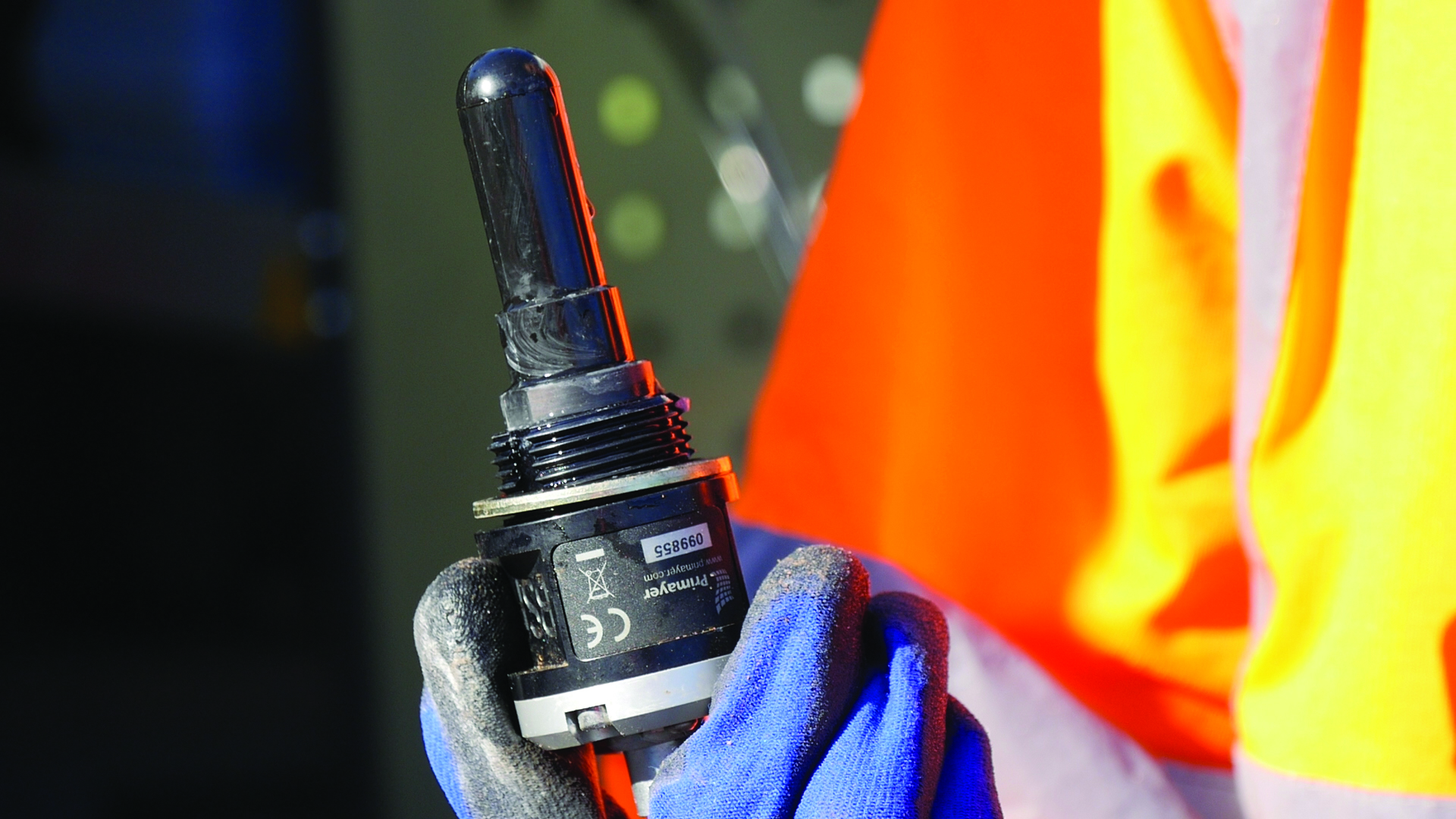Water supply utility Anglian Water has begun installing thousands of leak sensors across its network, as well as trialling a new kind of pressure sensor to stop a big cause of leaks; transient surges.

Just like a bell, a cast iron water pipe rings when struck, vibrating from a water leak at a frequency of 1,000Hz and above. Traditional methods of leak detection were acoustical: using the ear or listening sticks for the telltale constant hiss. Correlators compare the signal from accelerometers placed above and below a leak, and can pinpoint its location using a formula based on the speed of sound and the time delay.
Although leaks are an ever-present problem, these techniques are becoming less and less suitable for modern utilities, according to Andy Smith, regional optimisation manager at Anglian Water. First, many of the cast iron pipes are being replaced with plastic compounds, whose acoustical properties do not help engineers pinpoint leaks: less rigid than cast iron, they tend to emit less noise when vibrating, and what noise they do make is at a lower frequency (perhaps below 250Hz).
Second, like many water utilities, Anglian Water is becoming ever less willing to send out teams of engineers to deploy noise loggers in ‘lift and shift’ operations. The best hunting time is between 2am and 4am, when pressure is higher and few residents are turning taps on and off. But night work is expensive and labour-intensive, and can be risky, too, particularly if technicians have to work from access points in the road.
Pushing the distance
From an operational point of view, the utility would prefer to install fixed-place sensors, which offer the advantage of finding leaks quickly – before they grow to the point where the water has to be turned off for repairs.
Because plastic pipe is a poor sound propagator, traditional sensors would need to be placed 50-100m apart to detect leaks, according to Anglian Water research. That density would require a number of sensors that is prohibitively expensive, not only because of the hardware, but also the installation cost. But with new technology, the utility is able to push out the distance between sensors to 750m – though leaks have been detected as far as 3km away. That makes their purchase and installation easier to justify from an economic view.
Rather than listening to the tube, the sensors in question listen to the column of water. That is because the sensors are so-called ‘hydrophones’, originally developed for use in submarines. Crucially, not only can they detect leaks farther away, but also they can detect sounds at lower frequencies than the human ear, so can pick up the vibrations caused by leaks in plastic pipe that ripple through the water.
Based on the trial, carried out with Halma Water Management, leak detection firm Gutermann and hydrophone supplier Primayer, Anglian Water plans to install 3,500 such sensors by the end of 2020; only a few hundred are currently in the ground. In the following investment period to 2025, in excess of 10,000 sensors may be installed to cover about half of the utility’s network.
And that’s not all. The utility is not only listening for leaks, but also one of their biggest causes: fast pressure transients. If a factory is using the network to fill a large tank, for example, but uses an incorrectly-configured valve that slams off the water very quickly, that action will generate a pressure wave at three to four times the supply amplitude, but only for a split second. In such cases, the pressure finds the weakest point in the network, and possibly results in a burst pipe.
Previously, the utility has been unable to detect such effects, as system pressure measurements were taken as a five-minute average. A recent project is sampling pressures at a frequency of 128Hz, enabling the utility to start to identify transients in granular detail. The purpose of this is to be able to determine where these events are happening, so that they can be stopped.
Sampling rate on its own isn’t the solution; in fact, in the past it has been the problem. In an hour’s time, the sensor will have logged 460,000 readings; in a week, that’s 77.4m; all of that data quickly fills up a device’s memory that previously would have been periodically downloaded using a PDA. The breakthrough has been working with hardware OEMs – including local small business Syrinix, as well as Inflowmatix and Technolog – to develop smart ways of managing what data is captured, and what is sent. Now, for example, the sensors only sample at 128Hz during an event. Similiarly, Anglian Water scientists are working with hydrophone supplier Primayer to automate the processing of signal data, which is sent by GSM signals to a cloud server. (Anglian Water so far has not made a final supplier choice for the pressure sensors).
Explains Smith: “We are engaged with the supply chain; we actively look for new technology. Ultimately, it’s about doing things differently. If we continue to manage leakage and our infrastructure the same way, why should we expect a different result?”
A disadvantage to the utility is that both hydrophones and transient sensors – unlike traditional noise loggers – need to be installed in the water column, so inside the pipe. To keep costs down, Anglian Water has been scheduling their installation when customers have ordered a smart meter, for example, or digging new holes where old stop tap boxes and metering points needed replacement. An average new installation in a district metered area of on average 1,200 properties and 19km of water main might consist of 30 noise loggers and five enhanced pressure monitors.
And it might not stop there; as the dedicated monitoring points have been installed, it would be relatively low-cost to install other equipment too. That might include, for example, real-time water quality monitors. “We don’t even know what [other] sensors are available,” Smith concludes.
By Will Dalrymple

